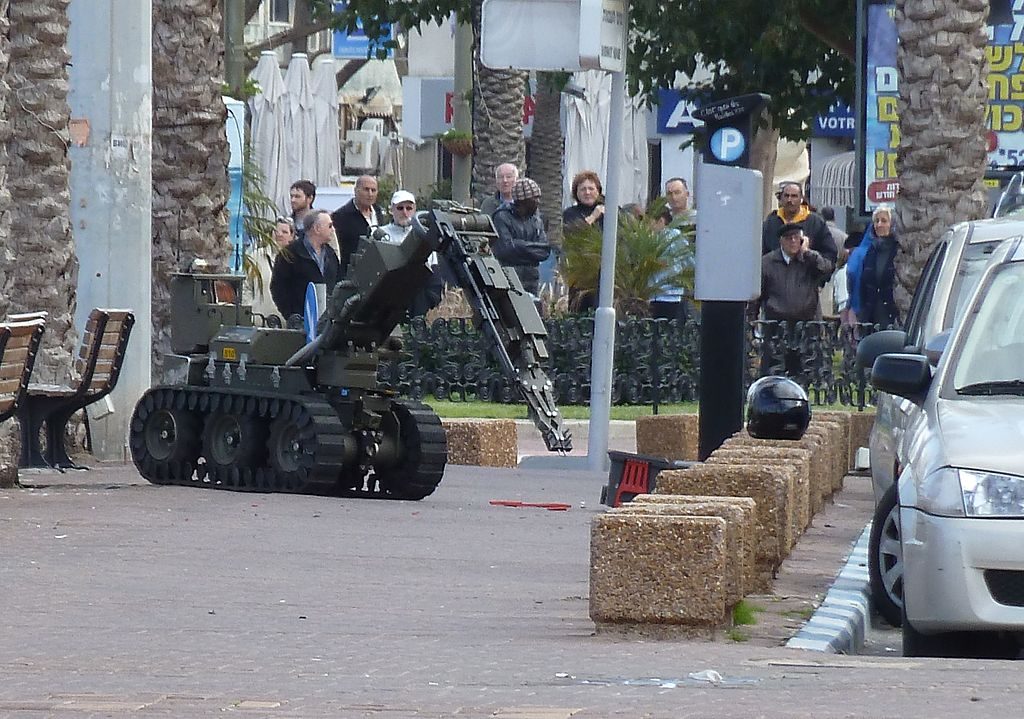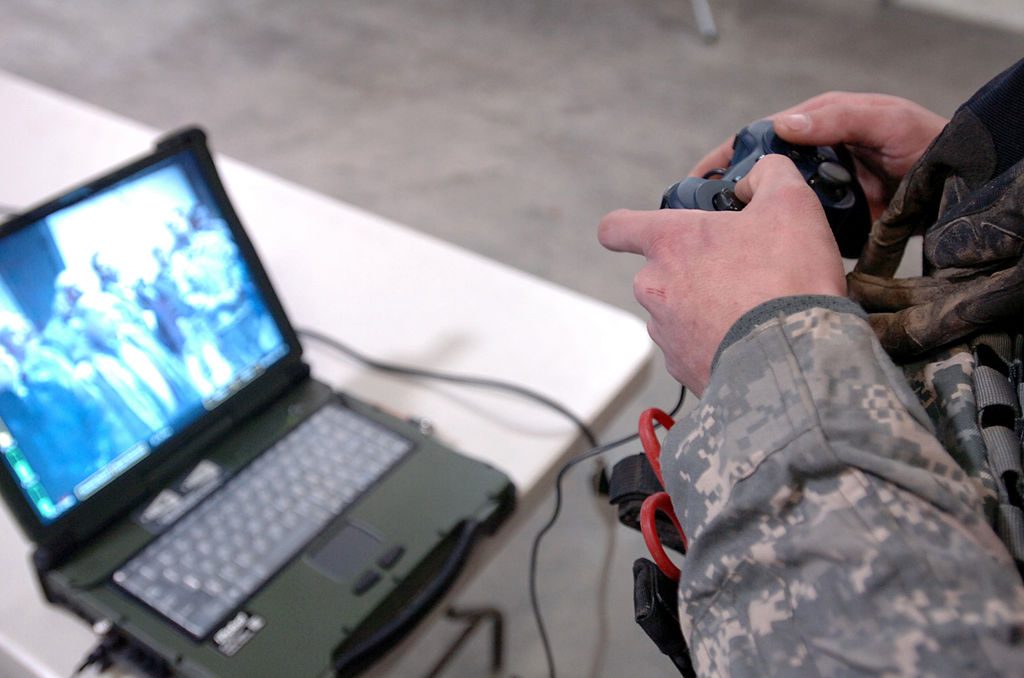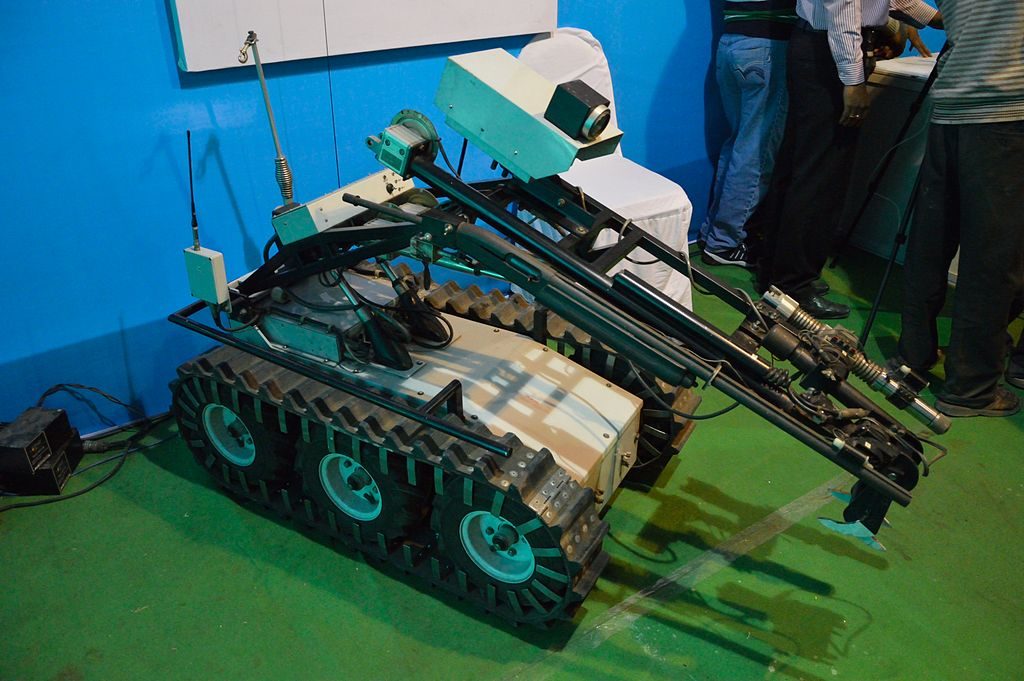Dallas Robot Spells Out The Future of AI in US Police Force

image credit: deror avi via wikimedia commons
Three days after the United States of America celebrated 4th of July, another tragedy shocked the nation with the shooting that happened in Dallas, Texas. The unprecedented numbers of shooting incidents in the US have already raised the alarms over domestic security. And it seems that even those who should protect its citizens are now under threat as well.
Micah Xavier Johnson, an Afghan War Army Reserve veteran, open fired at El Centro College on that fateful day of July 7th, killing five Dallas police officers in the process and injuring nine bystanders. It was sparked by his anger over the several cases of shootings of black people by police officers as covered by national news.
As a response, the Dallas police force was compelled to use a bomb disposal robot to kill Dallas shooter after a refusal to negotiate. The suspect also warned that he has installed improvised explosive devices all over the city which further pressed the Dallas police to detonate the bomb.
The remote-controlled device was equipped with an explosive and was detonated within the area of the suspect. Though bomb disposal robots were used before for various purposes like safely detonating bombs or preventing suicide attempts, this is considered to be a first in the history of law enforcement in America. In the military however, use of robots in combat was common especially in the Iraq and Afghanistan wars

image credit: sgt. john montoya wikimedia commons
Robots in law enforcement
The arrival and utilization of bomb disposal robots in domestic security issues emerged after the lengthy US military missions done in the Middle East. A so-called 1033 Program, then allowed for the transfer or donation of military equipment to civil agencies. And these include robots used in the Iraq and Afghanistan wars. Most robots from military are being used for bomb disposal by the police and other reconnaissance missions.
Based on 1033 public records: 717 transfers have been made to 280 law enforcement agencies
Top states with number of units received:
- California (CA) – 272
- Ohio (OH) – 40
- Alabama (AL) – 40
- Virginia (VA) – 35
- Arizona (AZ) – 53
- Washington (WA) – 29
- Colorado (CO) – 28
- Texas (TX) – 125
- Kansas (KS) – 23
- New Mexico (NM) – 22
Top agencies by units transferred:
- DOJ/FBI San Francisco – 139
- Covina Police Department – 34
- West Covina Police Department – 22
- Los Angeles County Sheriff Department – 22
- Allen County Sheriff Department – 21
- Greely Police Department – 16
- DOJ/ ATF Wichita – 11
- Law Enforcement Virginia Fire Marshall – 11
- Las Vegas Metro Police Department North – 15
The State of California has received most of the transfers (272) of robots used by the military. Texas comes in second with 125 transfers. A report on the 1033 Program also stated, “Northrop Grumman Remotec, Inc., the maker of the ANDROS robots, was the single largest awardee of DHS and DoJ contracts, receiving $2.43 million, followed by ReconRobotics with $900,514.”
The complete details of this report can be viewed at the Center for the Study of the Drone at Bard College.
The robot that killed
Just as mentioned in the 1033 Program, a Northrop Grumann Model F Remotec was used by the Dallas Police to end the life of the suspect. The remote-controlled device, has the following features, similar to this model:
- Integrated arm, gripper & articulator sensors supply OCU with real-time feedback on position & rotation using on-screen graphics
- Optional rear drive camera
- Color surveillance camera with light, zoom, pan/tilt
- Surveillance camera with image stabilization – 216:1 total zoom (26x optical/12x digital)
- Stationary arm camera – 40:1 total zoom (10x optical/4x digital)
- 24-inch camera extender
- Multiple-mission tool/sensor mounts with plug-and-play capabilities
- Gripper with continuous rotate
- Manipulator arm’s seven degrees of freedom ensure optimum dexterity
- Quick-release pneumatic wheels for rapid width-reduction, no tools required
- Patented articulating tracks allow for traversing ditches, obstacles and the roughest terrain

image credit: biswarup ganguly via wikimedia commons
Ethics behind robotic lethal force
Of course, ethicists are worried with the use of these devices for police missions. They can be equipped with different items other than explosives: could be flash-bang or tear gas to neutralize the suspect using non-lethal force.
Some people in the academe think that the necessity for the suspect to die is still subject to debate. Some are also worried with the implications of these decisions in the future. There are no clear guidelines yet when it comes to these situations as this tactic had just set a precedent in the future of allowing police force to use robots as an offense or a way to kill.
Robotics manufacturers don’t see any problem as long as “good judgment” is used. But some lawyers are pointing to the possibility that it may be overused, especially that robots can be used as a force against a human.
It is possible that we are already entering an “Age of Robocop” but the resonating agreement is that the police force must consider using robots to arrest suspects alive rather than have them dead immediately.